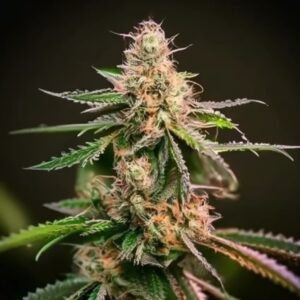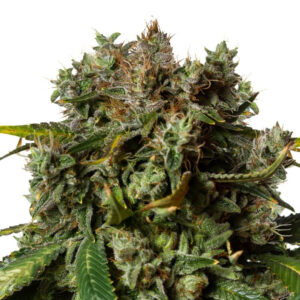 By:
Justin Time
By:
Justin Time
The process of successful cultivation hinges upon numerous critical factors, with the quality of seeds taking center stage. Every plant’s life begins with a seed, making it a microcosm of the future plant. It contains the genetic material determining the plant’s traits, such as its growth rate, size, resistance to pests and diseases, and yield. Hence, the seed can be viewed as the very blueprint of your future plant.
Understanding what distinguishes a high-quality seed from a poor one is key to ensuring that your cultivation efforts do not go to waste. This involves recognizing the physical characteristics of a healthy seed, knowing where and how to source the best marijuana seeds, and comprehending the environmental conditions that favor its germination and growth. Our goal with this article is to arm you with the necessary knowledge and guidance to select seeds that will lead to vigorous, thriving plants.
In addition to seed quality, there are other vital parameters influencing successful plant growth, such as the soil type and its nutrient content, correct watering practices, adequate lighting, and appropriate temperature and humidity conditions. However, even the best cultivation techniques will not compensate for poor seed quality. If the seed genetics are subpar, the resulting plant will likely be weak, susceptible to diseases, and yield a meager harvest, regardless of the environmental conditions and care given to it.
Consequently, never underestimate the importance of starting with high-quality marijuana seeds. They are the foundation upon which all other cultivation practices are built. Ensuring that the seeds you plant carry superior genetics increases the odds of ending up with robust, healthy, and high-yielding plants. This is the first step in reaping the rewards of your hard work and passion for cultivation.
Assessing seed quality may seem like a daunting task, but it becomes less intimidating once you know what to look for. While some seeds might appear similar to the untrained eye, there are definitive visual and tactile cues that can help discern the vitality of a seed.
A crucial first step in the evaluation process is to carefully observe the seed’s color and pattern. High-quality weed seeds often sport a dark hue, ranging from grey to brown. They are also marked by distinctive patterns, with tiny stripes or spots adorning their surface. Such visual cues serve as a testament to the seed’s maturity and health.
When you take a seed into your hand, pay attention to its surface texture. Healthy seeds often have a wax-like coating. This sheen acts as a protective layer, helping the seed retain its essential moisture content. If the seed is too dry, it may have lost this vital coating, which could negatively impact its ability to germinate.
The seed’s firmness to touch is another key indicator of its quality. High-quality pot seeds are generally hard and resilient. When you apply slight pressure between your fingers, a viable seed should resist cracking or crumbling. On the contrary, seeds that easily break under pressure are usually unhealthy or old and have a lower chance of successful germination.
Finally, consider the seed’s size and weight. Generally, larger, heavier seeds are more likely to germinate than smaller, lighter ones, as they contain more stored food reserves to support initial growth until the seedling can produce its own food through photosynthesis.
By taking the time to thoroughly inspect each seed’s appearance and feel, you’re already on your way to ensuring a healthier and more successful cultivation process.
For cannabis consumers, discovering seeds in a purchased bud might seem like a bonus, as these marijuana seeds may potentially be used for cultivation. However, the reality is somewhat different. The presence of seeds within marijuana buds often hints at specific cultivation practices, which can impact the overall quality of the cannabis product.
Generally, weed growers aim to prevent the pollination of their female plants. Female marijuana plants, when unpollinated, produce sinsemilla—a seedless cannabis flower that is high in psychoactive compounds, particularly THC. When a female plant gets pollinated by a male, its energy is redirected from producing these potent compounds towards seed formation. This results in buds with lower levels of THC, diminishing their quality and potency.
Additionally, the presence of seeds adds to the weight of the cannabis product. This weight contribution can be misleading, as buyers are essentially paying more for less usable product. Unlike the buds, marijuana seeds don’t contain significant levels of psychoactive compounds, so they don’t contribute to the product’s overall potency. Therefore, when buying marijuana, a seedless product often equates to better value for money.
The cultivation management that leads to seed presence in the buds may also hint at other potential issues. For instance, it could suggest a lack of careful oversight on the part of the grower, which may have led to other detrimental practices affecting the crop’s overall quality. As such, finding seeds in your weed buds should not be taken lightly. It is an indicator of the cultivation process that requires further consideration.
Given these factors, it is crucial for potential growers and consumers to understand the implications of seed presence in cannabis buds. Through this understanding, one can make more informed decisions about marijuana consumption and cultivation.
While understanding the basics of seed quality and cultivation is vital, it’s equally important to consider the potential of specific cannabis strains. The genetic makeup of different strains can significantly affect the characteristics of the plants, including their resistance to diseases, growth patterns, yield, and potency. By choosing a strain known for its high yield or specific effects, growers can optimize their cultivation process to meet their unique needs and preferences.
If you’re looking for an exceptional strain that promises bountiful yields, consider our NIGHT NURSE FEMINIZED strain. This strain has been carefully selected and bred for its outstanding performance in both yield and quality. But the cultivation journey doesn’t end at the seed selection. Proper plant care, informed by knowledge of the strain’s specific needs, is equally important in ensuring a successful harvest.
In the world of cannabis cultivation, the adage “you reap what you sow” holds particularly true. Quality seeds are an investment in the future success of your cultivation efforts. It’s about more than just purchasing a product; it’s about making a choice that will directly impact the health and output of your future plants.
Remember, each seed you plant represents a potential harvest. By starting with high-quality seeds and providing them with the care and conditions they need to thrive, you’ll be well on your way to a successful and rewarding cultivation experience. Whether you’re a novice grower venturing into cultivation for the first time or an experienced cultivator looking to optimize your operations, remember that every great harvest begins with a tiny, quality seed.













Related Posts

At AMS, we offer a wide selection of feminized marijuana seeds and expert advice to help you get started on your cannabis growing journey, no matter which method you choose. Order marijuana seeds today and start growing your own high-quality cannabis at home.

Welcome to the exciting world of cannabis and cryptocurrency! BTC and marijuana make the perfect match, offering a seamless and secure way to purchase weed seeds and accessories.

While it is the joy of every cannabis farmer to see flourishing cannabis plants, the most critical part lies in the way the same farmer takes action in necessitating a smooth cultivation process.
Before planting, having the seeds with you is always primal. But when should you order your marijuana seeds? Last-minute rush doesn’t ever dawn well, at least when…